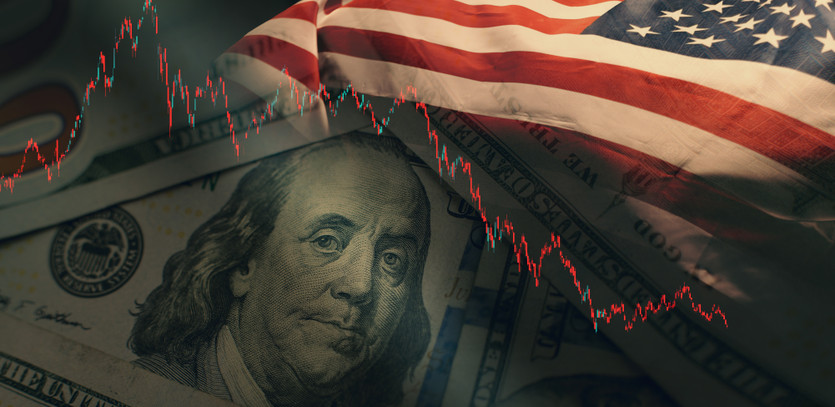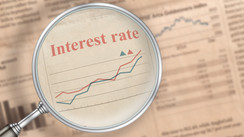Understanding the Intricacies of Inflation
Inflation embodies the gradual uptick in the cost of products and services over a certain timeframe. With an average annual inflation rate of 3.27% from 1914 to 2022, the United States has grown accustomed to mild inflation as an economic norm for over a century.
To fully comprehend the complexity of inflation, it's crucial to distinguish between the inherent influences of inflation at any given rate and those which surface during episodes of abnormally high inflation. In the following sections, we will delve into the principal effects of inflation on consumers, investors, and the broader economy.
Key Points of Discussion
- The Positives of Inflation for the Economy
- What Triggers Inflation?
Inflation signifies an escalation in the cost of goods and services within a specific period. As prices soar, consumers grapple with diminished purchasing power, translating into reduced value of each unit of currency compared to earlier times. While slight inflation seldom raises alarms, a rapid increase in prices is a cause for worry. But what propels this surge?
A handful of prevalent factors often drive inflation:
Moving forward, we'll explore some significant impacts of inflation on the economy.
The Far-reaching Effects of Inflation on the Economy
1. The Erosion of Purchasing Power Through Inflation
The primary and most ubiquitous effect of inflation is the erosion of consumers' purchasing power due to an overall increase in prices. Regardless of the inflation rate—be it 2% or 4%—consumers invariably suffer a loss in purchasing power. This simply implies that the loss doubles at a higher inflation rate, with compounding ensuring a greater overall price level increase in the long run if inflation persists.
Inflation, represented by indicators like the Consumer Price Index (CPI) and the PCE Price Index, gauges the price rise of a set of goods and services that reflect overall consumer spending over time.
2. Inflation's Disproportionate Burden on Lower-Income Consumers
Lower-income individuals, who allocate a larger portion of their earnings towards necessities compared to their higher-income counterparts, are more vulnerable to the reduction in purchasing power resulting from inflation.
While core inflation—which excludes the volatile prices of food and energy—is often the focus of policymakers and financial market participants, lower-income earners spend a sizable chunk of their budgets on these necessities. When their prices escalate, these individuals find it challenging to make substitutions or forgo these commodities. Additionally, they are less likely to own assets like real estate that can serve as a buffer against inflation.
However, there is a silver lining in the form of cost of living adjustments (COLA), based on the Consumer Price Index for Urban Wage Earners and Clerical Workers (CPI-W), for those receiving Social Security benefits and other federal transfer payments. These adjustments provide some protection against inflation.
3. Inflation Acts as a Buffer Against Deflation
The Federal Reserve sets a long-term inflation rate target of 2%. This assists it in fulfilling its mandate for price stability and maximum employment. The focus is on minor inflation instead of fixed prices because slight inflation encourages commercial transactions, provides a buffer in case of inflation overestimation, and prevents deflation. Price decreases can destabilize the economy more than equivalent inflation.
Inflation allows lenders to impose interest to counterbalance the depreciation of repayments due to inflation. It benefits debtors by enabling them to make future repayments with inflated currency. Conversely, deflation escalates the real cost of debt service, as incomes would likely drop along with prices.
Modest inflation is generally accepted because wages are inflexible downward. Workers tend to resist wage cuts during economic slumps, often leading to layoffs as an alternative for businesses experiencing a demand downturn. A positive inflation rate enables a wage freeze to act as a real-term reduction in labor costs.
Inflation's benefits against deflation persist only until price increases surpass the typical and expected rate, because high inflation can quickly become uncontrollable.
4. Inflation Propagates Itself When High
Mild inflation can signify a robust economy. Hence, it's unlikely to cause an increase in inflation expectations. If last year's inflation was 2%, and it remains 2% this year, it's mostly insignificant. Businesses, workers, and consumers would probably expect next year's inflation to stay at 2%.
However, if the inflation rate suddenly and persistently increases, future inflation expectations begin to rise correspondingly. Workers start asking for larger wage hikes, and employers pass on these costs by raising output prices, triggering a wage-price spiral.
In extreme cases, an improper policy response to high inflation can result in hyperinflation. Although, there's no need to fear extreme hyperinflation scenarios like those seen in Zimbabwe or Germany's Weimar Republic. In the U.S., inflation expectations during the 1970s resulted in annual inflation exceeding 13% by 1980 and the federal funds rate exceeding 20% by 1981. Unemployment reached over 10% until mid-1983 following subsequent recessions.
5. Inflation Increases Interest Rates
As the above examples indicate, governments and central banks are heavily motivated to control inflation. Over the past century, the approach has been to manage inflation using monetary policy. When inflation threatens to surpass a central bank's target, policymakers can raise the base interest rate. This pushes borrowing costs higher throughout the economy by restricting the money supply.
Consequently, inflation and interest rates usually move in tandem. By increasing interest rates when inflation rises, central banks can mitigate the economy's exuberance or risk appetite, and the accompanying price pressures.
6. Inflation Reduces Debt Service Costs
While new borrowers may face higher interest rates as inflation increases, those with fixed-rate loans benefit by repaying these loans with inflated money, thus reducing their inflation-adjusted debt service costs.
This, however, does not apply to adjustable-rate mortgages (ARMs), credit card balances, or home equity lines of credit (HELOCs), which typically allow lenders to increase their interest rates to keep pace with inflation and Fed rate hikes.
7. Inflation Stimulates Short-Term Growth & Employment
Inflation can stimulate economic growth in the short term. Despite being remembered as a period of stagflation, U.S. real GDP rose by an average of 3.2% annually between 1970 and 1979, significantly higher than the average growth rate since then.
Inflation discourages savings, as it diminishes the value of savings over time. This may motivate consumers to spend and businesses to invest. Consequently, unemployment often initially decreases as inflation increases.
8. Inflation Can Lead to Painful Recessions
The dilemma of balancing inflation and unemployment is that accepting higher inflation to protect jobs can cause inflation expectations to rise, triggering a spiral of price hikes and wage increases. This was witnessed during the stagflation of the 1970s in the United States.
To regain lost credibility and regain control over inflation, the Federal Reserve was compelled to significantly raise and maintain higher interest rates for an extended period. Consequently, unemployment soared and persisted longer than it likely would have if inflation had not spiraled to such heights.
9. Inflation's Impact on Bonds and Growth Stocks
Bonds typically considered low-risk investments that provide fixed-rate interest income, suffer when inflation rises, as it diminishes the present value of that income.
As inflation rises or remains elevated, interest rates increase, resulting in higher yields on newly issued bonds. The market price of previously issued bonds with lower yields declines proportionally since bond prices move inversely to yields. While investors with Treasury bonds still receive expected coupon payments and principal repayment at maturity, those who sell their bonds before maturity receive less due to the increased market yields.
Regarding stocks, there is no consensus on whether high inflation is detrimental or beneficial. It largely depends on the definition of high inflation and whether historical data includes the stock market's performance during the 1970s, which was a challenging decade for U.S. stocks amidst stagflation. Growth stocks, which are often more expensive, tend to be particularly sensitive to inflation. Inflation heavily discounts the present value of their future cash flows, similar to high-duration bonds. Consequently, technology and consumer stocks have historically underperformed during periods of high or rising inflation.
10. Inflation's Influence on Real Estate, Energy, and Value Stocks
Real estate has historically served as a hedge against inflation since landlords can increase rents to compensate for inflation's impact, while fixed-rate mortgages' real cost is eroded by inflation.
Rising commodity prices can accelerate inflation. Consequently, commodities, particularly energy commodities, often outperform during periods of high or rising inflation.
Not surprisingly, energy equities, real estate investment trusts (REITs), and value stocks have historically shown better performance during episodes of high or rising inflation.
These varied effects of inflation across different asset classes demonstrate the importance of understanding the implications of inflation and its potential impact on investments and the economy as a whole.
Inflation: A Double-Edged Sword for Employment
In the initial stages, climbing inflation can stimulate demand and lower real labor costs, promoting job growth. However, the persistent high inflation bill inevitably needs to be paid, leading to a severe downturn that reestablishes expectations or results in chronic economic underperformance.
Riding the Wave of Inflation: A Bitter-Sweet Scenario
High inflation acceptance over an extended period to safeguard jobs might escalate inflation expectations to the point where a vicious cycle of price and wage increases is ignited, as witnessed during the U.S. stagflation in the 1970s.
To regain credibility and convince the market of its commitment to curb inflation, the Fed was forced to significantly increase interest rates for an extended period. The consequence was soaring unemployment, which remained high for longer than it would have had the Fed prevented inflation from spiraling so uncontrollably.
The Impact of Inflation on Bonds and Growth Stocks
Bonds, perceived as low-risk investments offering regular fixed-rate interest income, lose their appeal during inflationary times as the present value of this income diminishes.
When it comes to stocks, opinions differ on whether high inflation is a boon or a bane. Growth stocks, which tend to be pricier, are notoriously susceptible to inflation.
The Brighter Side of Inflation: Benefiting Real Estate, Energy, and Value Stocks
Real estate often serves as a buffer against inflation, with landlords able to increase rents to offset inflation's impact while inflation dilutes the real cost of fixed-rate mortgages. Additionally, energy equities, real estate investment trusts (REITs), and value stocks typically outperform during periods of high or climbing inflation.
Inflation: The Upside and the Downside
While a modest rise in prices can benefit the economy by encouraging spending rather than hoarding cash, persistent inflation can be detrimental, particularly for savers.
Importantly, not all assets respond in the same way to inflation. While mortgage rates might rise, your home's value could drop, and vice versa.
Inflation: The Winners and the Losers
As is the case with any economic shift, inflation creates both winners and losers. For certain borrowers, particularly those with fixed-rate loans on their properties, inflation can be beneficial. Meanwhile, consumers stand to lose the most as inflation reduces purchasing power.
Concluding Thoughts
Inflation, the gradual increase in the prices of goods and services, reduces a currency's purchasing power and escalates the cost of living. In contrast, homeowners with fixed-rate mortgages can gain from inflation as it lowers the present value of their future mortgage payments.
In conclusion, inflation can be both advantageous and disadvantageous. Governments and central banks plan for manageable price increases, and consumers respond by spending, assuming that prices will rise at a moderate rate. However, when inflation goes off the rails, it can significantly hamper consumer purchasing power.





